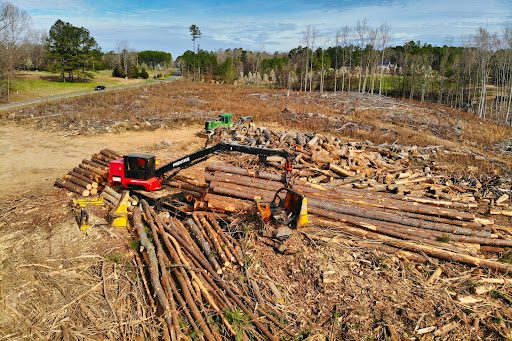There are a lot of misconceptions about the logging industry. Some of these misconceptions are thanks to practices that haven’t been used in decades, such as clearcutting entire regions without responsible regenerative practices. Some of these misconceptions are due to illegal logging activities that occur in the developing world, such as clearcutting the Amazon rainforest. Other misconceptions are simply due to public misunderstanding of how logging works and what the results of its practice are. This article is aimed at clearing up some of the most common misconceptions by pointing out some logging industry facts that you probably didn’t know.
Felling Wood Is Good For the Environment
There’s a general sense that cutting down trees harms the environment. To be sure, cutting trees down can be disruptive to local fauna and flora. However, this stress is ultimately beneficial for the environment, especially taken as a whole. Clearing old, damaged, bug-infested, and diseased trees is a top priority in modern forestry and logging. Clearing these trees to make forests less vulnerable to diseases and parasites, making the forest as a whole healthier. Even clearing healthy mature trees, when regenerative practices are kept in mind, also clears the way for immature trees to grow, meaning that there’s no long-term impact due to responsible logging.
Clearcutting, which has a really nasty reputation, when performed legally and following best practices, opens land up for new growth and provides diversification of habitat, allowing more diverse species to populate the ecosystem. As any good environmentalist will tell you, biodiversity leads to a stronger ecosystem that’s more resilient to dangers like climate change, disease, and invasive species.
The only time logging can be a meaningful detriment is when it’s being done in endangered or extremely delicate ecosystems, such as tropical rainforests. In the well-established temperate forests of North America, Europe, and much of Asia, logging allows the continuation of important life cycles that an over-developed forest can only maintain by spreading, which is often not an option since many forests are largely surrounded by developed land and natural barriers that prevent that expansion in the modern day. By clearing space within forests, the natural growth cycle of moving into unforested land can be completed as it would naturally without interfering with human activities.
Logging Helps Keep Communities Safe
This is most true in places like the Western USA that are prone to forest fires due to drought, but there are a lot of ways in which logging and forest management minimize the risks to people and property when properly managed.
- In the West, fire breaks and controlled clearcutting minimize the spread of fires that can cause enormous property damage, damage to forests, accelerate climate change, and cost human and animal lives.
- Everywhere where people build homes and live in forests, felling trees in danger of falling, that are diseased, or that carry parasitic insects protects from property damage and danger to safety.
- Properly managed forests protect soil integrity and can help reduce the severity of seasonal flooding more effectively than wild forests.
Additionally, logging’s economic benefits, outlined below help keep remote communities employed and productive.
Logging Is A Big Part of the Economy
Of the roughly 820,000,000 acres of forest in the USA, over 420,000,000 acres are considered to be “working forests” that get harvested cyclically or occasionally, creating forest products that drive our economy in critical ways, especially in remote communities. More than 900,000 jobs rely on logging and related industries, with an annual economic output of over $200,000,000,000.
While it’s still a relatively small part of the total US economy, it’s a major part of rural economies that don’t center on financial and high-tech industries. About a quarter of all the generated revenue of forest product industries goes towards salaries, meaning that a significant amount of money is getting into the pockets of the blue-collar workers that drive the industry. In fact, the US is the largest single producer of timber in the world, with almost half the global supply coming from the US.
This is also something you, personally, interact with all the time. It’s estimated that, on average, Americans use about 700 lbs of paper products every year. Paper towels, toilet paper, printed materials, paper packaging, mail, and so on are all forest products we’re constantly interacting with and relying upon, and we’ll be relying upon them for the foreseeable future because…
Logging Is Going To Be Necessary For The Foreseeable Future
Despite ever-improving recycling systems, there are hard limits on how many times forest products like paper can be recycled. In fact, virgin fiber can be recycled a maximum of 7 times, assuming it’s properly sorted and recycled every time. This is because the more times paper is recycled, the shorter the fibers become. Further, recycled paper isn’t ideal for many applications. Getting virgin material from logging will be necessary for as long as we use paper to any degree as a society.
Further, the lumber produced from trees remains one of the most popular, economic, and versatile building materials humanity has ever produced. Unlike materials derived from stone or petroleum, timber is infinitely renewable, making it the most ecologically sustainable option for construction as well. Even as we build more with materials like concrete, steel, and composite materials, we continue to use wood and improve wood for our use in the building.
This necessity for logging only becomes clearer as you investigate the direction of building technologies. Current engineered wood products have the kind of strength and durability that only belonged to mineral-based materials just a few short decades ago. It stands to reason that we will continue to find better ways to use wood for building, and it will remain integral to much of our infrastructure into the future. One such promising lead is creating plastics out of timber, which we’ve achieved, and merely need to make more economically viable.
Your Forest Industry Partner
At Tall Pines Forest Management, we focus on maximizing the universal benefits of forest management for the community, the environment, and our economy. This is why so many landowners in Maine and New Hampshire come to us for guidance and assistance in planning and overseeing logging operations. Reach out today to find out more about what we do and how we can help you ensure your next harvest is successful and beneficial to all involved.


0 Comments